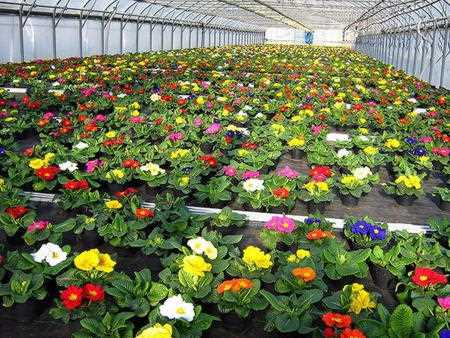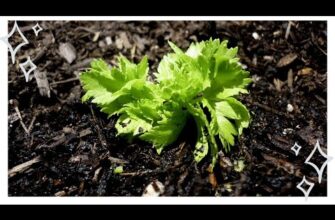- Выбор места для посадки примулы
- Подготовка почвы для выращивания примулы
- Выбор места для посадки
- Подготовка почвы
- Посадка примулы в саду: основные этапы
- Полив и уход за примулой
- Борьба с болезнями и вредителями примулы
- Болезни примулы
- Вредители примулы
- Разнообразие сортов примулы
- Популярные сорта примулы для сада
- Примула как декоративная культура
- Выращивание примулы в горшках и контейнерах
- Примула в ландшафтном дизайне сада
- Вопрос-ответ:
- Какие существуют виды примулы?
- Как правильно ухаживать за примулой в саду?
- Какие условия необходимы для выращивания примулы в саду?
- Какие сорта примулы можно посадить в саду?
- Какие проблемы могут возникнуть при выращивании примулы в саду?
- Видео:
- Примулы серии «БЕЛАРИНА»

Примула – это красивое и нежное растение, которое может стать настоящим украшением любого сада. Она привлекает внимание своими крупными и яркими цветами, которые цветут на протяжении всего весенне-летнего периода. В саду можно выращивать разные виды примулы, каждый из которых имеет свои особенности и требования к условиям выращивания.
Среди самых популярных видов примулы в саду можно выделить пальма-примулу, которая отличается своими крупными и глянцевыми листьями. Также в саду можно выращивать китайскую примулу, которая имеет красивые и душистые цветы разных оттенков. Еще одним популярным видом примулы является мушмула, которая отличается своими нежными и ароматными цветами.
Для успешного выращивания примулы в саду необходимо учесть несколько важных моментов. Во-первых, это выбор подходящего места для посадки. Примула предпочитает легкую и плодородную почву, а также полутень или тень. Также стоит помнить, что растение нуждается в регулярном поливе и умеренном удобрении.
Выводя многообразие сортов примулы в саду, можно создать настоящий цветочный рай. Каждый сорт примулы имеет свои уникальные особенности, цвета и формы цветов. Некоторые сорта имеют простые цветы, другие – махровые. В зависимости от предпочтений и стиля сада можно выбрать подходящую примулу, которая станет ярким акцентом и украшением вашего участка.
Выбор места для посадки примулы

Примула — это нежное и красивое растение, которое может стать настоящим украшением для вашего сада. Выращивание примулы в саду требует правильного выбора места для посадки.
Существует множество сортов примулы, и каждый из них предпочитает определенные условия. Поэтому перед посадкой примулы необходимо учитывать ее предпочтения и особенности. Некоторые сорта примулы предпочитают солнечное место, другие — полутень или тень. Поэтому рекомендуется изучить требования к конкретному сорту примулы и выбрать для нее подходящее место в саду.
Для большинства сортов примулы подходит затененное место, где она будет получать достаточное количество света, но не будет подвержена прямым солнечным лучам. Такие места могут быть под деревьями или кустарниками, а также на северной стороне дома.
Также учтите, что примула предпочитает влажные почвы. Поэтому выбирайте место с хорошим дренажем и возможностью регулярного полива.
Подготовка почвы для выращивания примулы

Примула – это красивое и нежное растение, которое отлично подойдет для украшения сада. Чтобы примула хорошо росла и радовала своими яркими цветами, необходимо правильно подготовить почву для выращивания.
Выбор места для посадки
Сад, где планируется выращивание примулы, должен быть хорошо освещенным, но при этом защищенным от прямых солнечных лучей. Идеальным вариантом будет полутень или место с разбросанными деревьями, которые будут создавать небольшую тень.
Подготовка почвы
Примула предпочитает рыхлую и плодородную почву. Для подготовки почвы можно использовать органическое удобрение, такое как перегной или компост. Органическое удобрение не только обогатит почву необходимыми элементами, но и поможет удерживать влагу.
Также важно обеспечить хорошую дренажную систему, чтобы избежать застаивания воды в корнях растения. Для этого можно добавить в почву песок или гравий.
Перед посадкой растения необходимо аккуратно проработать почву и удалить сорняки. После этого можно начинать сажать примулу, следуя рекомендациям посадки для выбранного сорта или вида растения.
Посадка примулы в саду: основные этапы

Примула – это красивое и нежное растение, которое прекрасно смотрится в саду. Посадка примулы в саду – это важный этап заботы о растении, который требует некоторых знаний и навыков.
Первым шагом при посадке примулы в саду является выбор подходящего места. Примуле нужно место с полутенью или тенью, чтобы она не перегревалась на солнце. Также важно выбрать участок с хорошо дренированной почвой, чтобы избежать застоя воды, которая может негативно сказаться на развитии растения.
Далее следует подготовить почву. Для посадки примулы лучше использовать смесь из питательного грунта и компоста или перегноя. Это позволит обеспечить растению необходимые питательные вещества и воду.
После подготовки почвы можно приступать к посадке примулы. Растение следует высаживать на глубину, равную его собственной высоте, оставляя между растениями достаточное расстояние для роста и развития.
После посадки примулу нужно хорошо полить и укрыть мульчей, чтобы сохранить влагу и предотвратить сорняки. Также важно регулярно поливать растение и контролировать уровень влажности почвы.
Следуя этим основным этапам, вы сможете успешно посадить примулу в саду и наслаждаться ее красотой и нежным ароматом.
Полив и уход за примулой

Примула — это нежное и красивое растение, требующее тщательного ухода для своего процветания. Один из важных аспектов ухода за примулой — это полив. Оно должно быть регулярным, но не избыточным. Чтобы определить, когда нужно поливать растение, можно прибегнуть к простому способу — проверить влажность почвы пальцем. Если она ощущается сухой, то примуле необходимо полить.
Однако следует помнить, что примуле не нравится сильно холодная и жесткая вода, поэтому лучше поливать ее мягкой и немного теплой водой. Также полезно обратить внимание на качество воды — она не должна содержать большое количество хлора и других химических добавок.
Важным аспектом ухода за примулой является также подкормка. Для этого можно использовать специальные удобрения для цветущих комнатных растений. Подкормку следует проводить регулярно, но не избыточно, чтобы не нанести вреда растению.
Также важным моментом в уходе за примулой является поддержание оптимальной температуры и света. Растение предпочитает яркое, но рассеянное освещение, а также умеренную температуру. Оно чувствует себя комфортно при температуре около 18-20 градусов Цельсия. Если в помещении слишком жарко или слишком холодно, примула может страдать и не цвести.
Борьба с болезнями и вредителями примулы
Выращивание примулы в саду может быть затруднено некоторыми болезнями и вредителями, которые могут нанести вред растению. Важно принимать меры по их предотвращению и борьбе, чтобы обеспечить здоровье и красоту примулы.
Болезни примулы

Одной из распространенных болезней примулы является мучнистая роса. Она проявляется в виде белого налета на листьях и стеблях растения. Чтобы предотвратить ее появление, рекомендуется поддерживать хорошую вентиляцию и избегать излишнего увлажнения почвы. Если заболевание все же появляется, можно использовать фунгицидные препараты для его лечения.
Еще одной распространенной болезнью примулы является серая гниль. Она проявляется в виде серого налета на листьях и цветках. Для предотвращения появления этой болезни рекомендуется избегать переувлажнения и обеспечивать хорошую вентиляцию. В случае заражения растения, его следует удалить и обработать фунгицидами.
Вредители примулы

Одним из вредителей примулы является тля. Она может быть опасна для растения, так как питается его соками. Чтобы бороться с тлями, можно использовать инсектициды или приготовить настой из чеснока и обработать им пораженные участки.
Так стоп!!! Вы всё ещё не подписаны на наши каналы в Телеграмм и Дзен? Посмотрите: ТГ - (@historyfantasydetectivechat) и Дзен (https://dzen.ru/myshortsstorys)
Еще одним вредителем примулы является клещ. Он также питается соками растения и может вызвать его увядание. Для борьбы с клещами рекомендуется применять акридициды или использовать специальные препараты, предназначенные для борьбы с этим вредителем.
Разнообразие сортов примулы

Выращивание примулы в саду может стать увлекательным занятием благодаря большому разнообразию сортов данного растения. Существует множество различных видов примулы, каждый из которых отличается особыми характеристиками и внешним видом.
Сорта примулы
Среди популярных сортов примулы можно выделить следующие:
- Примула обыкновенная (Primula vulgaris) — это классический вид примулы с яркими цветками различных оттенков. Он отлично подходит для украшения садовых клумб и рабаток.
- Примула южная (Primula vialii) — данный вид примулы имеет необычные колосовидные соцветия с яркими фиолетовыми цветками. Он привлекает внимание своей необычной формой и цветом.
- Примула шаровидная (Primula denticulata) — эта примула отличается формой соцветий, которые имеют шаровидную форму. Цветки могут быть разных оттенков, что создает интересный и красивый вид.
Разнообразие цветов примулы
Примула может быть разнообразных цветов: от белого и розового до фиолетового и синего. Также среди сортов примулы можно встретить цветы с разнообразными узорами и полосками.
Использование в саду
Благодаря большому разнообразию сортов, примулу можно использовать для создания ярких цветочных композиций в саду. Она прекрасно смотрится на клумбах, рабатках, а также может использоваться для оформления горшков и цветочных алей.
Таким образом, выращивание различных сортов примулы в саду позволит создать красивые и оригинальные цветочные композиции, которые будут радовать глаз своим разнообразием и изысканностью.
Популярные сорта примулы для сада

Примула — это растение семейства примуловых, которое обладает яркой и красивой цветущей листвой. Выращивание примулы в саду позволяет создать красочные клумбы и цветочные композиции. Виды примулы разнообразны, и каждый сорт имеет свои особенности и отличия.
Пуховидная примула — один из самых популярных сортов примулы для сада. Ее особенностью является наличие пушистых волосков на листьях и цветоносах, которые создают эффект пушистой текстуры. Этот сорт примулы отлично смотрится в группах и садовых композициях.
Конусовидная примула — это сорт примулы с крупными цветками, собранными в виде конуса. Цветки обычно яркие и насыщенные, что делает эту примулу очень привлекательной для садового украшения. Конусовидная примула хорошо выглядит как в одиночных посадках, так и в композициях с другими видами растений.
Нечайная примула — это вид примулы с маленькими и нежными цветками, которые собраны в кистевидные соцветия. Этот сорт примулы обычно имеет яркие и насыщенные цвета, что придает саду особую красоту. Нечайная примула хорошо растет в полутени и частично затененных местах.
Все эти сорта примулы являются популярными выборами для озеленения сада. Выращивание этих сортов примулы позволит создать яркие и красивые клумбы, которые будут радовать глаза своими яркими цветами.
Примула как декоративная культура
Примула — это одно из самых популярных и красивых растений, которое используется для озеленения садов и украшения интерьеров. Декоративность этой культуры проявляется в ее разнообразии сортов и видов, а также в их ярких и неповторимых цветах.
Выращивание примулы не требует особых навыков и усилий. Это растение приспособлено к различным условиям выращивания и может процветать как в саду, так и в горшках на подоконнике. Оно предпочитает полутень или тень, умеренный полив и рыхлую, плодородную почву.
Примула отличается большим разнообразием видов и сортов. В природе существует около 400 видов этого растения, а селекционеры создали еще больше гибридов и сортов с разными формами, размерами и цветами цветков. Они могут быть одиночными или собраными в соцветия, а их цвет может быть белым, розовым, желтым, синим или фиолетовым.
Примула является идеальным выбором для создания ярких цветочных композиций в саду или на балконе. Она также может использоваться для оформления клумб, газонов и цветочных грядок. Сочетание разных видов и сортов примулы позволяет создавать оригинальные и привлекательные композиции, которые будут радовать глаз весь сезон.
Выращивание примулы в горшках и контейнерах

Примула является прекрасным растением для выращивания в горшках и контейнерах. Благодаря своей небольшой и компактной форме, она легко помещается на балконах, террасах и внутри помещений. Более того, существует множество сортов примулы, которые отличаются разнообразием цветов и форм листьев.
Для выращивания примулы в горшках и контейнерах необходимо выбрать подходящую почву. Лучше всего использовать легкую и рыхлую почву, содержащую песок и торф. Помимо этого, важно обеспечить растению достаточное количество света. Примула предпочитает яркий рассеянный свет, поэтому лучше выбирать место, где она будет получать достаточное освещение, но не будет подвергаться прямому солнечному излучению.
Полив примулы в горшках и контейнерах также имеет свои особенности. Растение нуждается в регулярном увлажнении, но не переносит застоя влаги. Поэтому важно следить за состоянием почвы и поливать растение, когда верхний слой земли высохнет. Однако следует избегать пересушивания почвы, так как это может негативно сказаться на здоровье растения.
Примула в ландшафтном дизайне сада

Примула – это многолетнее растение, которое отлично вписывается в ландшафтный дизайн сада. Ее красивые и нежные цветы разнообразных оттенков могут стать настоящим украшением цветников, клумб и рабаток. Благодаря разнообразию видов и сортов примулы, можно создать самые разные композиции и комбинации цветов в саду.
Среди видов примулы, которые популярны в ландшафтном дизайне, можно выделить такие как: примула обыкновенная, примула крупноцветковая, примула девичья, примула техасская. Каждый вид имеет свои особенности и требования к условиям выращивания, поэтому важно учитывать их при планировании цветника или клумбы.
Помимо разнообразия видов, примула имеет большое количество сортов, которые отличаются цветом и размерами цветков. Некоторые сорта имеют пестрые листья или двухцветные цветки, что делает их еще более привлекательными для использования в ландшафтном дизайне. Сочетание разных сортов примулы позволит создать яркие и красивые композиции, которые будут радовать глаз весь сезон.
Вопрос-ответ:
Какие существуют виды примулы?
Существует множество видов примулы, включая обыкновенную примулу, китайскую примулу, японскую примулу, кавказскую примулу и другие. Каждый вид имеет свои особенности и требования к условиям выращивания.
Как правильно ухаживать за примулой в саду?
Для успешного выращивания примулы в саду необходимо обеспечить ей полутенистое место, регулярный полив, умеренное подкормку и защиту от засухи. Также важно удалять увядшие цветы и листья, чтобы стимулировать рост новых.
Какие условия необходимы для выращивания примулы в саду?
Примула предпочитает полутенистое место с утренним солнцем и защитой от прямых лучей во второй половине дня. Также важно обеспечить ей рыхлую, плодородную почву с хорошей влагоудерживающей способностью. Регулярный полив и подкормка также являются неотъемлемой частью условий выращивания.
Какие сорта примулы можно посадить в саду?
В саду можно посадить различные сорта примулы, включая примулу крупноцветковую, примулу фиалковидную, примулу дымчатую и другие. Каждый сорт имеет свои особенности и отличается по цвету и размеру цветков.
Какие проблемы могут возникнуть при выращивании примулы в саду?
При выращивании примулы в саду могут возникнуть такие проблемы, как засуха, пересыхание корней, атака вредителей (например, мучнистого червеца или тлей), а также гниение корней из-за избытка влаги. Для предотвращения этих проблем необходимо правильно ухаживать за растением и регулярно проверять его состояние.








